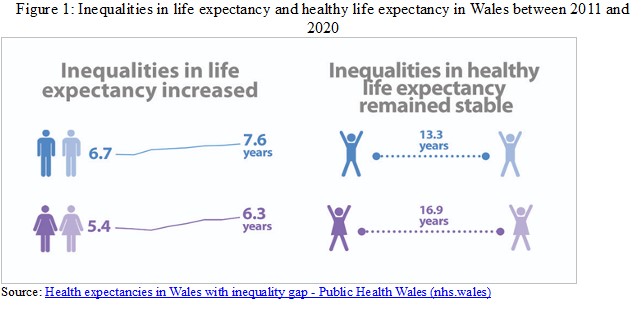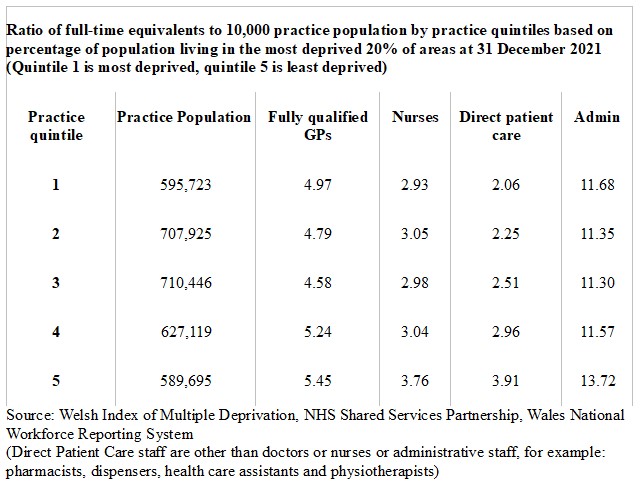 Subscribers Only
People
Subscribers Only
People 
Brian Gibbons and Kathrin Thomas highlight the need for more effective planning to tackle the continuing disparities between need and provision in the Welsh NHS primary care.
It is over half a century since Dr Julian Hart, who was based in Glyncorrwg in the Upper Afan Valley, described the Inverse Care Law. He stated: –
The availability of good medical care tends to vary inversely with the need for it in the population served. This inverse care law operates more completely where medical care is most exposed to market forces, and less so where such exposure is reduced. The market distribution of medical care is a primitive and historically outdated social form, and any return to it would further exaggerate the maldistribution of medical resources. ( Lancet February 1971).
The message seemed clear.
The availability of good medical care was least likely to be available where need was greatest. The more market forces determined health care distribution, the greater this effect would be.
In Wales the “Internal Market” in health care was abolished in 2009 with a return to health service planning. Seven Health Boards were created which are responsible for planning and providing all health services for their populations. This change, allied to the repeated commitment of the Welsh Government to tackle health inequalities, should have provided a strong impetus to tackle the Inverse Care Law here in Wales. But progress has been very slow.
The core of Primary Health Care are general practices, with community pharmacies, dentists and optometrists, and other community health services such as health visitors and district nurses. There are about 390 GP Practices in Wales, and almost all provide services according to the same contract agreed nationally with the Welsh Government. Since 2010, these Independent Contractors and many other community services have come together in 64 Clusters to work together to improve the health of their communities. Clusters receive additional funding, of which some can be used to employ staff, and this is allocated by head of population with no weighting according to need or deprivation.
Deprivation is one of the major drivers of workload in primary care.
Men living in the most deprived communities spend an average of 13 MORE years living in poor health than men living in the least deprived communities, as well as dying an average of 7.6 years earlier. A very similar situation exists for women. This massive burden of poor health has a HUGE impact on GP workload in more disadvantaged areas.

Primary care is where over 90% of health care is delivered. It is made up of general practice and the full range of community-based health care services, although the largest and core element is General Practice. It is the crucial point of first contact for most patients as well as being the main location of preventive health care and the management of long-term ill-health.
We would expect that the sickest and poorest patients in Wales would have the greatest provision of General Practice.
Sadly, this seems not to be the case. General Practices get paid a fixed amount paid per patient per year, regardless of how often they see their GP. Although this is weighted for age and other factors, it is clear that it is not weighted sufficiently to match this actual need and workload.
This is clear from a recent study from the Welsh Government’s own Statistics Unit.
The purpose of the study was to analyse the distribution of the workforce between the 390 general practices and 64 Clusters in Wales, according to the deprivation of the communities they serve.
They started by dividing Welsh residents into 5 groups according to their post code score in the Welsh Index of Multiple Deprivation. Group 1 are those in the most deprived 20% of postcodes, and Group 5 are living in the least deprived postcodes. Each group is called a quintile (a fifth) of the whole population. They analysed the practices by the proportion of their registered patients who live in each quintile, and also by the number of their patients in each quintile. They then compared the workforce in all the GP Practices serving each quantile.
There were 15% fewer GPs and 30% fewer nurses in practices serving the most deprived quintile as measured by patient numbers. When similar calculations were done based on the proportion of practice population from deprived areas the figure was 10% more GPs in the most affluent practices and 28% more nurses (see Table 1). Similar patterns, with some variation, were seen at a cluster level and when other front line community health staff numbers were analysed.

This important study was published with virtually no publicity and even less media attention. It shows that many of the fundamentals of the way that General Practice is being delivered remain in line with “The Inverse Care Law”. The populations living in the poorest and sickest areas in Wales are more likely to have fewer GPs and other health care support staff available to them.
The Wales Audit Office (2018) pointed out that the levels of investment in wider Primary Care had suffered a real time decline between 2011 and 2017. Primary Care still receives about 18% of NHS spend in Wales with General Practices receiving around 7%.
This pattern of spending and its distribution is not going to achieve the transformative change that the Welsh Government is committed to achieving. And if capacity and resources are not better aligned to need, then it is inevitable that health inequalities will persist.
Brian Gibbons is a medical doctor and former minister for Health and Social Services, Economy and Transport as well as for Social Justice and Local Government, standing down in 2011. Kathrin Thomas is a public health consultant and ex-GP.



Really very interesting piece, much work to do still to tackle many of these now well ingrained problems.